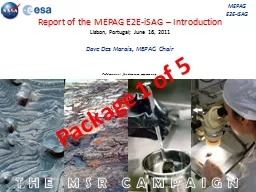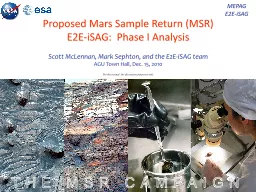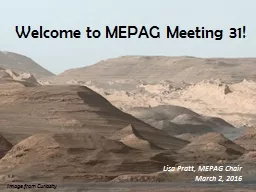PPT-THE MSR CAMPAIGN Report of the MEPAG E2E-iSAG – Introduction
Author : bikersnomercy | Published Date : 2020-06-22
Lisbon Portugal June 16 2011 Dave Des Marais MEPAG Chair MEPAG E2EiSAG Predecisional for discussion purposes only 6102011 1 Package 1 of 5 Sample Return is the Next
Presentation Embed Code
Download Presentation
Download Presentation The PPT/PDF document "THE MSR CAMPAIGN Report of the MEPAG E2E..." is the property of its rightful owner. Permission is granted to download and print the materials on this website for personal, non-commercial use only, and to display it on your personal computer provided you do not modify the materials and that you retain all copyright notices contained in the materials. By downloading content from our website, you accept the terms of this agreement.
THE MSR CAMPAIGN Report of the MEPAG E2E-iSAG – Introduction: Transcript
Download Rules Of Document
"THE MSR CAMPAIGN Report of the MEPAG E2E-iSAG – Introduction"The content belongs to its owner. You may download and print it for personal use, without modification, and keep all copyright notices. By downloading, you agree to these terms.
Related Documents














